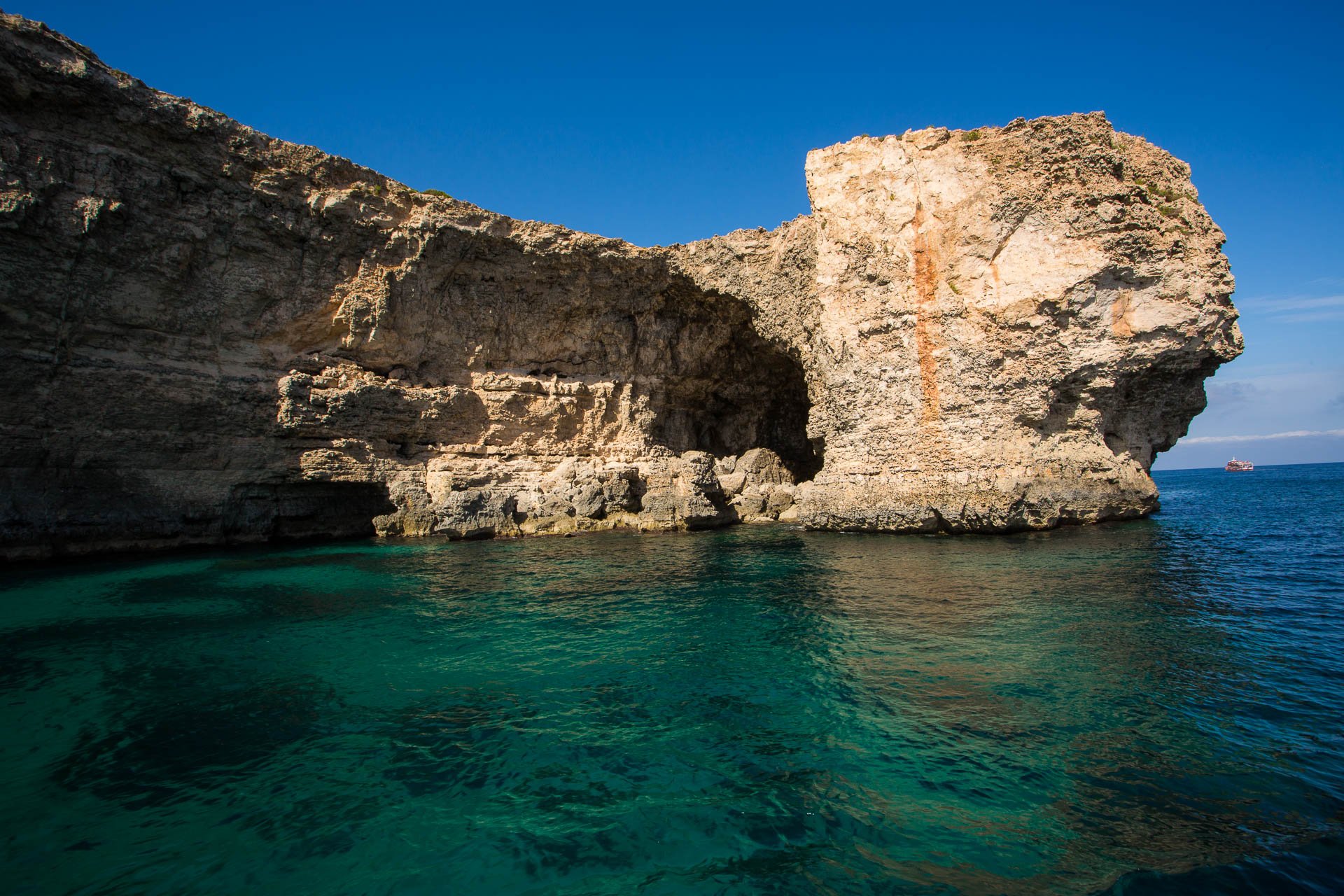
Malta is the only country in the world where the local delicacy is the bread.
- Alan Coren
We then went down to the Blue Grotto, not a place that really appealed to me to stop and visit, but I was able to get a few nice images from the bus as we passed by.
These ancient temples predate the pyramids of Egypt. Stonehenge or any other megalith.
From Tarxien, I jumped back (after a fair wait) onto the bus and went through the three cities and down to the fishing village of Marsaxlokk for lunch and to see the colourful fishing boats.
Unfortunately, the magnificent Hypergien was fulled booked until mid-November, but I was able to see the Tarxien Temples. An excavated temple surrounded by houses and one graveyard.
Following the Cathedral, I left the Silent City and went to Rabat, the neighbouring “real” town of the area.
The Mdina is known as the Silent City. It is an ancient walled town, still inhabited. I wandered through the streets for a while before finding Ciapette for some lunch
Having seen much of Gozo, a few of us, ditched the big boat and took a small speedboat to Comino run by a bronzed man and his little dog.
After everyone had boarded we set off on the crystal blue ocean, the first sight we saw, the Statue of St. Paul overlooking the island where he came to write much of his religious work.
From the hotel, I jumped on one of the Arriva buses and headed to Valletta. I got off at the main terminal, a locale dominated by the Triton fountain.
The feel of the place is Greek, but not. Sandstone and beige buildings dominate. The sea is a dark rich blue and the clouds fade to haze on the horizon.
Silema is one of the wealthier areas in Malta, with upmarket shops and restaurants.











